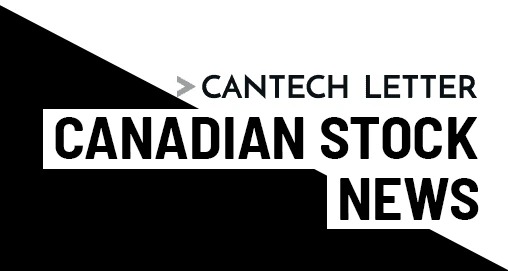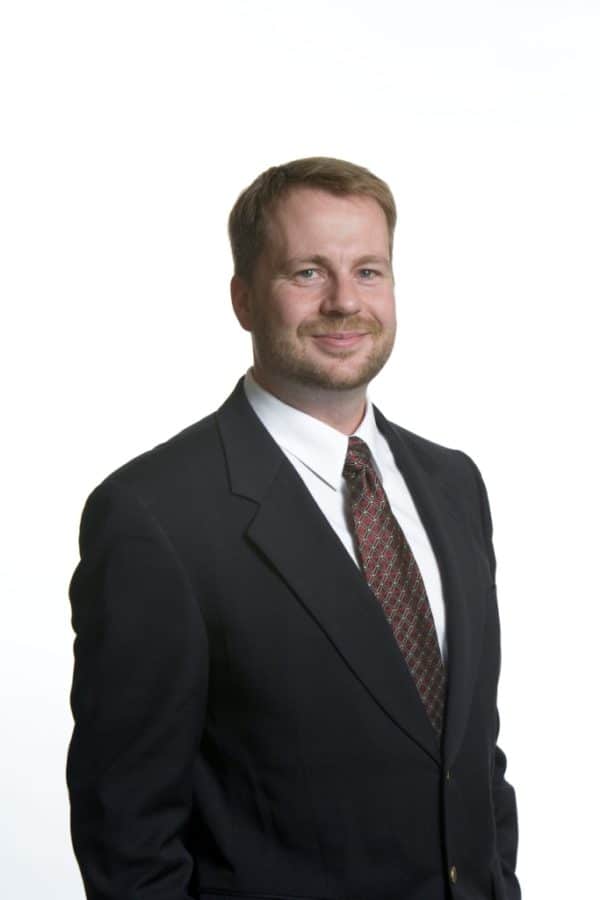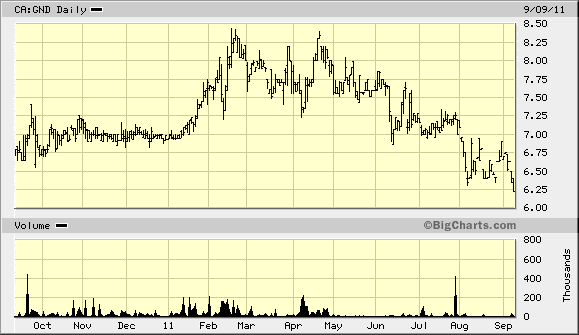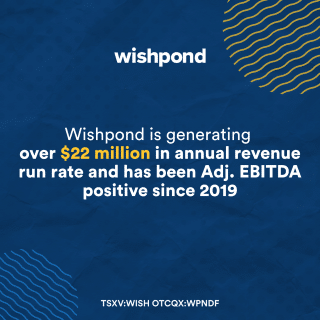
In Alberta’s oil sands, it’s hard to trust a number. Oil sands fuel creates 82 percent more greenhouse gases than regular fuel, the U.S. Environmental Protection Agency estimates. Not so, says IHS Cambridge Energy Research Associates, who say that number is more in the range of five to fifteen per cent higher than the average crude consumed in the US. A report commissioned by the Sage Centre and World Wildlife Fund-Canada said the flow of the Athabasca River at Fort McMurray has declined almost 20 per cent from 1958 to 2003, and to continue to use it as a water source is unsustainable. Alberta’s Regional Aquatics Monitoring Program (RAMP) says all existing oil sands projects withdraw less than 1 percent of the average annual flow of the Athabasca River, far below the three percent The Government of Alberta has allocated for current and and approved oil sands projects.
The divide between those who support the oil sands and those who oppose it is deep, but now matter how deeply entrenched the each side is, a full scale victory is extremely unlikely for either. Environmental protesters will not stop protesting, and those who defend the oil sands are unlikely to abate. But does the solution need to be a straight down the middle compromise, or is there a third path?
A growing number of Canadian companies are developing innovative solutions that can have immediate and lasting impact to not only the problems of the oil sands, but the larger world in general. Recently, a study conducted jointly by researchers at the Schulich School of Engineering and the Faculty of Science at the University of Calgary, and subsequently published in the journal Chemosphere, found that adding a nitrate reducing bacteria to oilsands tailings ponds could reduce greenhouse gas emissions by degrading or literally eating toxic hydrocarbons and leave behind non-toxic heavy metals. Exciting stuff. But does the opportunity to clean up the oil sands offer anything actionable to Canadian investors?
The eight companies listed below are all listed on the TSX or TSXV. Their technologies run the gamut from wastewater management to carbon capture. Some are firmly ensconced in Fort McMurray, others are in the later stages of developing technologies that could have ramifications there. In brief interviews, we’ve enlisted the help of some of these companies to help us understand how their technology is unique. These stocks are listed by market capitalization, from highest to lowest.
1. NewAlata (TSX:NAL)
Market Cap, as of October 27th, 2010: $441.2 million
Revenue (Trailing Four Quarters) : $527.6 million
A New Alberta. That’s what many are looking for from oil sands technology. Calgary’s NewAlta may be one of the companies that helps to practically deliver it. NewAlta is a one stop industrial waste shop, offering best of breed solutions in everything from soil remediation, hazardous waste management and water well assessments. With its size, NewAlta has network of 85 facilities from coast to coast, scope and unparalleled connections to the patch, NewAlta may ultimately act as a liaison between the brightest new technologies and Fort McMurray. An example of this would be the company’s recent investment of $4 million into Bioteq Environmental (TSX:BQE), and its leading edge technology in treating SAGD wastewater, earlier this year.
2. Marsulex (TSX:MLX)
Market Cap, as of October 27th, 2010: $374.6 million.
Revenue (Trailing Four Quarters): $178.57
Carbon capture technology is nothing new. The earliest ideas for FGD, or flue gas desulfurization, which is used to remove sulfur dioxide (SO2) from the exhaust flue gases of fossil fuel power plants, were established in England in the mid-nineteenth century. When large scale plants began to dot the landscape after the industrial revolution, public pressure to ensure they were safe ramped up. Toronto’s Marsulex takes FGD to a 21st century level of efficiency; the company’s proprietary ammonium scrubbing technology is used to absorb SO2 from combustion gases. What’s more, a facility downstream of the scrubber produces ammonium sulphate, a high value crop fertilizer. Recovering and selling this fertilizer reduces overall costs. Marsulex demonstrated this at The Shajiao Power Plant in Guangdong Province, China, a cost effective solution that produced a whopping a 95% reduction in SO2 emissions.
But for Marsulex, the oil sands is still where it’s at. “The rapid growth of oil sands operations, both upstream, downstream, including refineries in the USA, represents our highest growth opportunity at Marsulex.” says CEO Laurie Tugman.
Marsulex has already partnered with Syncrude Canada to use its proprietary ammonium scrubbing technology in Fort Mcmurray, and began to derive revenue from the oil sands more than half a decade ago. Expansion seems inevitable for the company’s technology; Marsulex is already well established with the area big boys, having partnered with Suncor and Shell Canada at their refineries in Montreal.
Tugman points out that the company is still defining new markets for itself in Fort McMurray:
“We are active in the upstream area of oil sands as well” he says. “One of our fastest growing product lines is our ScavguardTM proprietary sodium bisulphite (SBS) water treatment chemical used to remove oxygen from steam assist gravity drain (SAGD) closed-loop steam-water systems, currently the dominant technology for recovering bitumen that is too deep to mine.” The Company has also made strides in the area of water treatment which repeats what may become a theme for Marsulex; the recovery of a usable by-product. “We are working on a unique formulation for alum that has the potential to provide a treatment solution for recycling water from tailings operations. It is noteworthy that these products are produced from another useable by-product of the upgrading process, sulphur.”
3. Wavefront (TSXV:WEE)
Market Cap, as of October 27th, 2010: $115.5 million
Revenue (Trailing Four Quarters): $2.19 million
Never a dull moment. Few stocks have experienced as much of a roller coaster ride as Wavefront Technologies has of late. The company went from pennies a share in late 2005 to a high of near $5 in early 2006 before subsequently retreating and rallying several times. Wavefront’s Powerwave product, a technology that helps with oil well stimulation, secondary oil recovery and environmental groundwater remediation, is seen by some as potentiallly revolutionary. Investors clearly felt the company’s most recent financing of more than $20 million removed much of the company’s execution risk, as shares resumed their upward march in late 2010. Click here for Jim Letourneau’s take on Wavefront, also in this issue.
4. Bioteq Environmental (TSX:BQE)
Market Cap, as of October 27th, 2010: $57.2 million
Revenue (trailing four quarters): $8.75 million
Vancouver’s Bioteq Environmental (TSXV:BQE), which has been working with water treatment technologies since 1998, has a pitch that is hard for many of the world’s larger mining companies and utility operators to refuse. In an increasingly regulated environment, Bioteq has developed a sulphide based process that recovers metals and leaves behind clean water. Old sulphate based treatment systems can’t do this. What’s more, the recovered metals from Bioteq’s processes are byproducts that can be sold to offset the cost of water treatment. In a result that surely wasn’t typical, a Japanese wastewater treatment plant in Nagano reported it had recovered 66 ounces of gold per tonne from incinerated sludge. In 2009, BioteQ treated 7.25 billion litres of wastewater, and removed 2.2 million pounds of metal contaminants from the environment. With just over $6 million in revenue last year, Bioteq is small, but has grown steadily and has an ambitious slate of projects coming online An investment from NewAlta may pave the way for Bioteq’s technology to move into the tar sands, but the company has enjoyed international exposure for its in places as diverse as China, Mexico Chile and Australia.
5. Seair (TSXV:SDS)
Market Cap, as of October 27th: $19 million
Revenue (Trailing four quarters): $3.41 million
Harold Kinasewich’s business life has been all about water. Kinasewich, now the President and CEO of Edmonton based Seair, founded O’Canada Spring Water and 02 Canada Beverages, companies that made oxygenated spring water. Understanding that technology led him to Seair, which develops technologies that diffuse gases into liquids. Seair’s diffusion system, which creates bubbles of ozone, oxygen or carbon dioxide. Seair now has more than a dozen systems in place at Syncrude’s Aurora mine near Fort McMurray.
Cantech Letter talks to Harold Kinasewich, President and CEO of Seair:
Nick Waddell: Harold, for readers who have not heard of Seair before can you break down a bit of your history for us, and fill us in on the company’s technology?
HK: Seair develops technologies to diffuse gases into liquids. Our technology has been proven in wastewater treatment, pulp and paper, food processing, golf course and agricultural irrigation and numerous oil and gas applications. Seair’s business is developing and selling equipment that diffuses gases like oxygen, ozone and carbon dioxide to create a supersaturated solution. Our current focus is treating water for oilsands operators, design and sales of wastewater solutions for communities not connected to a municipal collection systems and employing our 100 portable wastewater treatment plants for remote camps. What differentiates Seair from other gas diffusion treatments is our ability to produce an extremely small bubble size, which allows for a mass transfer of gas to fluid. The micro bubble results in a stable condition; gas remains in solution for extended periods of time resulting in increased productivity and lower costs. Seair Inc. is proud to have been selected as one of the “2008 TSX Venture 50”, a ranking of the top 10 public venture capital companies in 5 industry sectors listed on the TSX Venture Exchange.

NW: In August you announced that you completed a trial with a major oil sands producer for your groundwater treatment system. How did that come about?
HK: In August Seair announcement the sale of additional groundwater treatment systems to one of Canada’s most experienced oil sands producers. Seair has been working with this company for the last four or five years through various stages including research and development, field testing to the commercial scale. The Seair technology was field tested through the winter months to demonstrate the potential to operate without failure during the extreme cold weather in Fort McMurray. After proving that the Seair equipment could achieve the desired results to reach discharge standards and operate in harsh environments the customer elected to purchase the equipment.
NW: What do you think is the major driver behind oil sands producers adopting new technologies? Is it stricter environmental regulations or cost savings?
HK: I’d say the main driving force is cost savings. Stricter environmental regulations are important and should be taken into consideration, but solutions that address those regulatory needs while also providing cost savings are the ones that move to the top of the priority list. The advantages of Seair’s dewatering solution is that it is extremely easy to install and represents a small foot print that promises to free up acreage that would otherwise be required to hold/store water. This is not only a cost saving for the operator but also means they might be able to mine in areas that weren’t otherwise accessible. That’s a potential additional revenue source.
NW: How big of an issue do you believe the tailings ponds in the oil sands is? A decade from now, do you think tailings ponds will be a thing of the past?
HK: Tailing ponds are a big issue if for no other reason than water management is a huge cost for oil sands companies. There is a strong economic incentive to shrink the ponds, but they know that any steps to do so must be environmentally sound. Many technologies are being tried that can reduce the amount of process water that goes into the ponds, remove solids etc., but in the end it will be necessary to address the residual toxicity of water. This is where Seair has something very unique to offer the industry. Our low pressure ozone-based advanced oxidation diffusion treatment processes can eliminate toxins on a commercial scale flow-through basis, eliminating the requirement for large treatment tanks. Water treated by Seair can then be safely reintroduced to the processing plant, effectively creating a closed-loop water ecosystem. Some ponds will always likely be a part of the process, but on a far smaller scale and a much quicker turnaround than the tailing ponds as we think of them today. There are all sorts of new technologies being developed for use in the oil sands, Suncor has developed polymers that separate water from clay, nitrate reducing bacteria’s that have been developed at The University of Calgary…Do you think that Canadian companies can build a legacy around becoming world leaders in dealing with the problems that the oil sands presents?
NW: Do you think that Seair can commercialize technologies you perfect in the oil sands an apply them in other places around the world?
The water solutions being developed by Seair have applicability at all mining operations, not just the oil sands. The processes may have to be customized depending upon the contaminants including toxins present at a particular operation, but the core approach will be the same. Ten years from now we may just look at the oil sands as a small segment of the global mining water treatment business that Seair’s diffusion technology is in position to supply solutions for.
6. Aqua-Pure Ventures (TSXV:AQE)
Market Cap, as of October 27th, 2010: $17.9 million
Revenue (Trailing Four Quarters): $7.18 million

“We are oilfield people that learned water, not water people trying to understand the oilfield ” says Brent Halldorson, Aqua-Pure’s COO “I see this as a very important distinction” Aqua-Pure, which installed the first evaporator in Alberta Heavy Oil service for Alberta Energy (now EnCana) in 1998, has has migrated away from being solely a technology provider into becoming a complete water management provider. Aqua-Pure has has developed a niche market in Texas. The Company’s subsidiary Fountain Quail Water Management, has recycled over 500 million gallons of Barnett Shale flowback and produced water back into distilled water for re-use. Halldorson sees this, combined with the company’s experience and contacts in Fort Mcmurray as a combination that is hard to beat: “Our expertise in heavy oil produced water led us into the shale gas market, so we definitely have to ability to be very competitive in heavy oil”, he says. “Several heavy oil producers have spoken with us about using our technology and services to treat produced water in Alberta. We truly understand what is needed to be successful in an oilfield environment, specifically equipment that is tough and serviceable and people that find a solution to problems as they arise.”
7. CO2 Solutions (TSXV:CST)
Market Cap, as of October 27th, 2010: $9 million
Revenue (Trailing Four Quarters): Development Stage
Imitating nature. C02 Solutions believes it can lower the cost of carbon capture technology by exploiting a naturally occuring enzyme, carbonic anhydrase, to catalyze the transformation of CO2 into bicarbonate ion, an inert substance. C02 believes that this enzyme can be reliably produced in commercial quantities similar to the way ethanol currently is, and safely used in an industrial environment. One interesting aspect with immediate relevance to the oil sands, is that The Company’s technology can also be applied to the capture and production of pure CO2 for underground storage. CO2 is now working to scale up its technology for commercial application aided, in part, by a recent $2 million investment from Codexis (NASDAQ: CDXS) a California company that has partnered with Royal Dutch Shell to develop enhanced methods of converting non-food biomass to advanced biofuels.
Market Cap, as of October 27th, 2010: $7.3 million
Revenue (Trailing Four Quarters): $3.81 million
The debate over whether carbon offsets work in the real world is a long, complicated and, ultimately, incomplete one. Some argue that the concept of ‘additionality”, the idea that the consumer is unaware whether an offset solution would have happened regardless of the additional funds, renders the market ripe for scandal. Others say carbon offsets are the earliest form of establishing and enforcing a financial aspect to pollution. Clearly, the market is evolving. When the US Federal Trade Commission began to hold hearings on increasing transparency and regulating marketing claims, a list of trusted vendors, such as TerraPass and Carbonfund.org began to emerge. Vancouver’s ERA Carbon Offsets (TSXV:ESR) is a recent entry into the game, but has already made great strides in Canada. We talk to ERA’s CEO, Robert Falls:
1. Robert, ERA Carbon has signed MOA’s with Indian bands, such as the Haisla First Nation and the Chehalis Band Council in British Columbia. Do you think this could be a workable model for a carbon offset solution in the Alberta Oil sands?
Robert Falls: Projects undertaken with First Nations are potentially well suited for energy development companies that have a strong CSR (Corporate Social Responsibility) or sustainability policies, that support community programming having co-benefits that go beyond carbon, e.g. biodiversity, local employment, etc. Addressing regulatory requirements regarding CO2 emission management, such as those in Alberta, with such community-based programming, is challenging at this time, as supporting protocols need to be developed on a priority basis. Within this context, at this time First Nations projects involving forest restoration are best suited to CSR requirements, which by nature are voluntary. Lessons learned therein should be applicable to regulatory programs.
2. Your clients include large corporations, such as Shell Canada, but also smaller entities that are not necessarily for profit such as the University of Waterloo and the Steve Nash Charity Classic. Do you find more differences or similarities in the motivation for these respective entities to adopt Era Carbon solutions?
RF: To date, our programming has primarily been directed to the voluntary and CSR markets. All of ERA’s clients to date, have chosen to participate in offset programming, because they as individuals or organizations have an ethic directed to “giving back” to the environment that sustains us. This ethic would be the common denominator. The differences would be related to the very broad range of activities that are being offset, from the running of a home, to the production of newsprint, to the holding of a sporting or other entertainment event.
3. Do you have numbers on what kind of growth carbon offsets are experiencing? What percentage of multinational corporations for instance, have engaged in carbon offset programs?
RF: Since I began monitoring offset activity in the late 90’s, the numbers have been growing steadily. With respect to the voluntary markets that are reported by Ecosystem Marketplace, volumes have grown steadily from 11 million tonnes in 2002, to 93 million tonnes in 2009. While there has been some turbulence within this period, the volume growth is clear and sustained. At ERA, our first year of sales in 2005 netted just over 1500 tonnes of sales, and have grown every year thereafter. For 2010, we anticipate sales of over 800,000 tonnes. Internationally, and including both voluntary and regulated markets, the industry has grown from approximately zero dollars 20 years ago, to over $144 billion (USD) in 2009.
With respect to the engagement of multinationals, of the largest 500 companies in the world, approximately 35% are participating, or considering participation in offset programming, and this number is no doubt growing annually.
4. ERA has done work in various places around the world, including Germany, Africa and the United States. Where does Canada rank as a market for carbon offsets? Would you say we are early or late adopters?
RF: Canada represents somewhat of an enigma, both in terms of climate policy, and participation in climate mitigation through programming that includes offsetting. As the largest per capita emitter in the world, endowed with enormous carbon-based energy reserves, the country was quick to engage in the issue domestically, and internationally. However, as a consequence of the strong linkage between growing carbon emissions and growing carbon-based energy development, the country’s climate and energy policies have been at odds for almost two decades. So in terms of climate policy and action, including offsetting, Canada has gone from a recognized international leader, to a follower, apparently awaiting energy and climate policy developments in the U.S. The exception to this is in the CSR or voluntary offsetting space, where forward-thinking Canadian companies have been active for almost two decades.
Comment
Leave a Reply
You must be logged in to post a comment.




 Share
Share Tweet
Tweet Share
Share




VOTE Seair (TSXV:SDS)
In Australia, Seair will have some interesting water and energy saving projects to tell Canadian about…